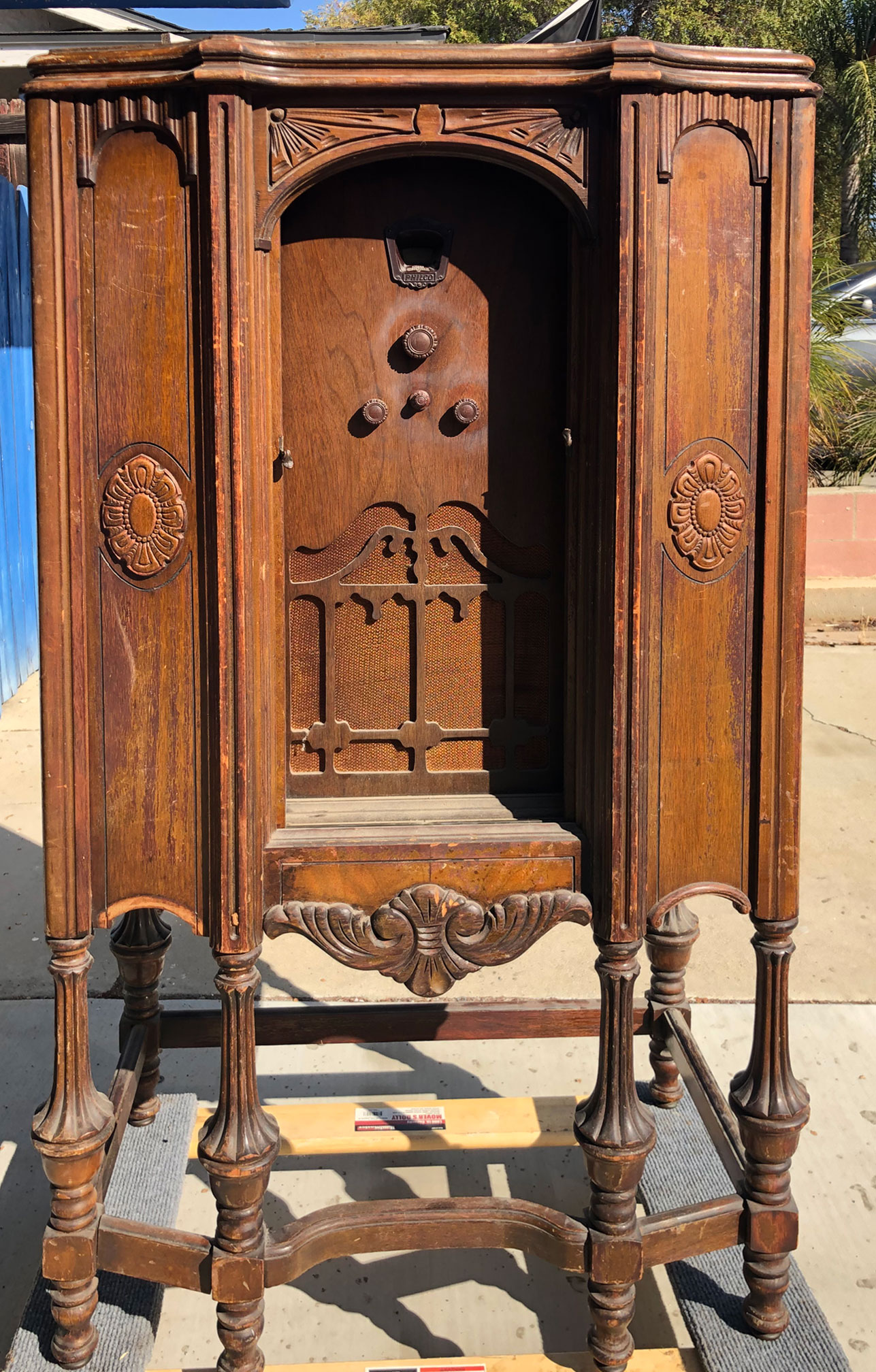![]()
 Philco, like many companies, liked to use the same chassis in a number of different cabinets to suit customers' tastes. The Model 90 chassis ended up as both a Baby Grand (more commonly known today as a cathedral) and as a full-size console. Most people probably know the cathedral version, it and the Model 20 are the two icons of the type. This is the first time I've seen the console version. The advantage the consumer got with the console was a larger speaker, so even deaf grandpa could hear Eddie Cantor and Rudy Valée without sticking a horn in his ear.
Philco, like many companies, liked to use the same chassis in a number of different cabinets to suit customers' tastes. The Model 90 chassis ended up as both a Baby Grand (more commonly known today as a cathedral) and as a full-size console. Most people probably know the cathedral version, it and the Model 20 are the two icons of the type. This is the first time I've seen the console version. The advantage the consumer got with the console was a larger speaker, so even deaf grandpa could hear Eddie Cantor and Rudy Valée without sticking a horn in his ear.
The difference between a highboy style and a lowboy is the length of the legs. Highboys had longish legs, lowboys had short, stubby legs. In a few years the legs would disappear and the cabinet panels would extend right to the floor.
When I was a child we had a big 26-inch Magnavox console TV in the living room (everyone had a big console in the living room). What made it special to me was that it had two big doors that slid horizontally; open you got the TV screen and controls; closed you got a nice looking wooden door. It was like having a roll-top desk.
The highboy also has doors; I'm a sucker with cabinets with doors.
Right now I'm confused about the cabinet style. Every internet source I've seen shows the Model 90 highboy has having a different cabinet style. I looked mine over and I haven't seen any markings, so I don't know if this was an alternate cabinet version, or if someone bought the cabinet and had a Model 90 fitted to it, which has been known to happen.
Much of what I've learned electrically comes from the good people at Tuberadioland.com and Radiomuseum. There appear to be three versions of the Model 90 chassis. The first version uses two type 45 output tubes, which are bruisers and are expensive. The second has one type 47 tube for output; the last uses two 47s push-pull and added an AVC circuit. Riders Perpetual Troubleshooter Volume 2 covers the first two versions; Volume 3 covers the last.
This article on AntiqueRadioForum.com describes the different chassis versions in some detail.
I read a note in Service magazine (I don't remember which issue—June, July or August of 1931) that warned against running the 47 tubes without the speaker plugged in, as it will ruin them. The filaments won't burn out but the emission is killed. No comment on whether it would do the same to type 45s.
Philcoradio.com has a correcting item regarding the Model 90 service informtion for the single 47 version. According to this, two multi-stage capacitor banks, #24 and #30 on the schematic, are wrong. #24 has three stages (not four), all 0.25µF, wire colors all black; and #30 has three stages (not two), at 0.1, 0.25 and 1.0µF, wire colors black, white and green respectively. Claims the error is in both Philco's docs and Rider's PTM.
IF is 175 kc on this one. Gotta be careful about that when aligning.
Tube compliment (nine total). My version has the single 47 output, so this is the tube compliment:
24 - RF amp
24 - 1st detector
27 - local oscillator
24 - IF amp
27 - 2nd detector rectifier
27 - 2nd detector amplifier
27 - First AF amp
47 - AF power out
80 - power rectifier
pilot lamp - #41 (2.5V, screw base)
Picked up for $25 from the local thrift store. Haven't had a chance to go through it yet, other than to determine that mine has the single 47 output tube.
Current status: this radio is no longer in my collection. This page will be removed in late 2024.
